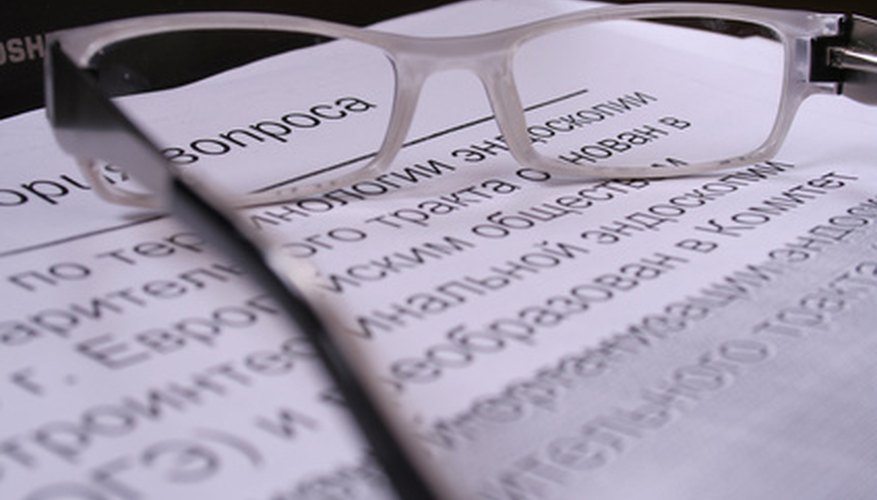While business letters still serve as an important form of professional communication, newer ways of corresponding with clients are available to the business owner. These methods, such as e-mail or video conferencing, illustrate both the advantages and disadvantages of the traditional written letter. A well-rounded business operation takes advantage of every useful communication tool.
Proof of Communication
Written letters provide a physical record of business correspondence; they can be filed, pulled out for reference and kept for years. No matter what kind of technology comes along, printed words on paper is a medium that anyone can understand. This is an advantage over e-mail; although e-mail can be printed out, the receipt of a business letter requires no further steps than to open it, read it and file it. Printing e-mails as written confirmation must include a working printer plus adequate ink and paper. Even with those essentials covered, paper jams, software glitches and e-mail program crashes can interfere with turning an electronic message into a written one. When a business phone call is made, each person can interpret the result differently, because there is no visual proof of the conversation; a business letter clearly spells out the terms of any professional encounter so both parties understand the business at hand.
- Written letters provide a physical record of business correspondence; they can be filed, pulled out for reference and kept for years.
- When a business phone call is made, each person can interpret the result differently, because there is no visual proof of the conversation; a business letter clearly spells out the terms of any professional encounter so both parties understand the business at hand.
Courtesy and Language
Business letters are often more professional in tone than e-mail. Even in today's evolving business environment, people send e-mails littered with slang, emoticons and personal details. No one would draw in a smiley face and include a favourite movie quote at the bottom of a sales letter, yet people do it every day with e-mail. Courteous use of titles and greetings are also overlooked when doing business through e-mail. Although this is a learnt behaviour, it is widespread. Language is more polite and businesslike when typed on official, physical letterhead and mailed or delivered to the recipient, giving it a professional advantage.
- Business letters are often more professional in tone than e-mail.
- Courteous use of titles and greetings are also overlooked when doing business through e-mail.
Time
As the old saying goes, "Time is money," and time is the disadvantage of business letters. Sending a letter through the regular mail takes time; a letter can even be lost, damaged or destroyed in transit. Business phone calls, video conferences and e-mails are quick, almost instant ways to communicate with a client, and business moves along faster. Waiting for an important business letter can take a few days or weeks, depending on the distance between participants.
- As the old saying goes, "Time is money," and time is the disadvantage of business letters.
- Waiting for an important business letter can take a few days or weeks, depending on the distance between participants.
Storage
While business letters can be filed away, they also take up a lot of space. The physical nature of the letter ends up being a disadvantage when it comes to storage. Some businesses have entire rooms full of file cabinets containing several decades of communication, space that could be used for new offices or equipment. Since electronic communication requires no paper, several years' worth of e-mails easily fit onto an external hard drive or flash drive, and can be stored in a desk drawer.
- While business letters can be filed away, they also take up a lot of space.
- Some businesses have entire rooms full of file cabinets containing several decades of communication, space that could be used for new offices or equipment.
